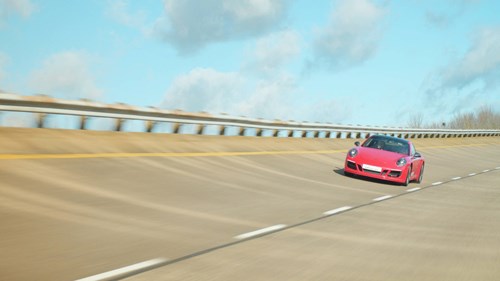

Posted: December 8, 2016
If you’ve ever been to IKEA, the chances are you’ve walked past that big Perspex box containing a recliner chair. There’s a big counter next to the chair and that’s measuring the number of compressions the robot makes as it imitates a person sitting down on it.
Typically the counter is reading in the hundreds of thousands and the point of the robot is to ensure a consistent test experience time and time again. This consistent approach means the results of the test will accurately reflect the abilities of the product and ensure that outside variables play no part in influencing the object's performance.
Here at CAT, we have years of experience teaching automotive engineers how to be safe when evaluating vehicles at speed on test tracks. In order for a test driver or engineer to be safe and have the mental capacity to critique and evaluate dynamic changes in vehicle components, they have to perform with a consistent approach equal to that demonstrated by the “robotic buttocks” mentioned in the example above. This involves a high level of discipline and self-control.

Let’s imagine for example, that you have 5 sets of springs and dampers to evaluate on a vehicle over the course of a day. You could be evaluating ride comfort, roll rates, understeer, steering response and a whole host of other variables. If each time you drive a lap, your speed varies or your line alters you will find it very difficult to evaluate the change in the components. You’ll be left wondering if it is the component that has changed the dynamic characteristics of the vehicle, or if it’s the test engineer’s driving technique.
Running inaccurate evaluations is an expensive business. Financially it can run into tens if not hundreds of thousands of pounds. Then there’s the additional man hours needed and the delay in getting the component into production. It makes good financial sense then, to invest in advanced driver training for your test drivers and engineers.
Let’s say you’ve decided to go on a track day. Having worked on the key areas of your technique, you find yourself circulating quickly, enjoying the experience and feeling elated at your new found speed and consistency. Would you be able to pat yourself on the back for your consistent performance or would you want more?
Without discipline, the chances are you would listen to that little demon who sits on your shoulder urging you to drive just that little bit faster into the next turn or perhaps brake that little bit later at the end of the straight. The demon is a random thinker, unstructured and reactive to speed, unclear of his abilities, he never knows when he is at risk of an accident until he is in it. He lives on a diet of adrenalin and fear and will do anything he can to drive you into the gravel trap.
Good track day and race drivers are able to use their discipline and self-control to block the demon out. Using features on a lap to tag your speed and keep it in check is a handy tip. Paying close attention to your RPM, braking points and acceleration points is also important.
Use your peripheral vision to acknowledge the scenery as you pass it to add structure to your references. We sometimes forget the basics and focus on the demon’s advice. Yes, you may be able to brake a metre later or carry an extra 5 mph into a corner, but ask yourself a simple question...
Are you building your speed from a disciplined bench mark?
If you have achieved “Grip Limit” through a corner, then look for the next corner where you have not. Don’t keep pushing for speed if the tyres are howling and you are understeering off of the line you have steered. I raise this point because it’s an area we’re consistently working on with new circuit drivers. The advice seems obvious when viewed in print but not always when lapping the Handling Circuit at Millbrook.
The nearer you get to grip limit the less opportunity you have of correcting a mistake.
Add structure to your lap and be disciplined with your approach to speed, and don’t forget to enjoy the pay off: safety at speed and the satisfaction of knowing how you achieved it.
If you are interested in working on your driving skill we offer a range of bespoke courses for road, track, race and the motor industry. To find out more get in touch with Lynne or Jo on 01234 757 633 or info@catdrivertraining.co.uk.
Call: 01234 757 633
Email: info@catdrivertraining.co.uk
CAT Driver Training is the fast way to develop & improve authentic dynamic driving skill, technique & knowledge from the Best. OEM recognised driver training for individuals & the motor industry. As the leading UK based independent advanced performance driving skills company, we exist to make your driving experience even better. Explore your cars potential, fulfill your own. Coaching advanced road & track skills, safety driver training courses for individual driving enthusiasts & advanced driving for all facets of the motor industry. The only training company resident within UTAC's Millbrook Proving Ground in Bedfordshire, within easy reach of London, & all surrounding counties: Hertfordshire; Buckinghamshire; Oxfordshire; Nottinghamshire; Cambridgeshire; Norfolk; Suffolk; Essex; & Surrey. Clients travel from the World over & the UK to learn from the authentic evidence based dynamic driving & vehicle dynamic experts. | All Rights Reserved | Copyright 2005 – 2025
Some of the links we use are affiliate links. This means that, at no cost to you, CAT will earn an affiliate commission if you click through the link and finalise a purchase.
Designed by WHP
Coded and built by Prominent Media